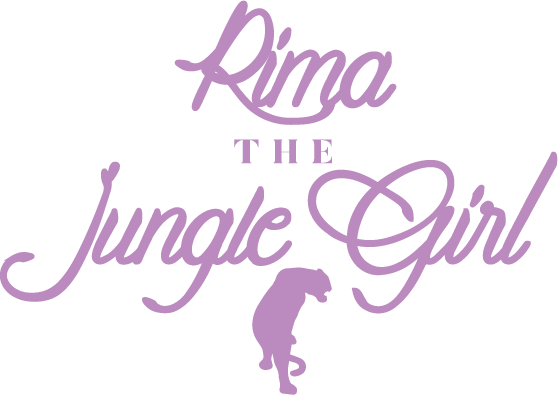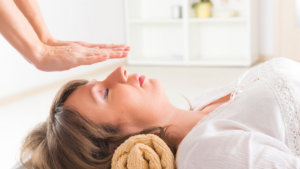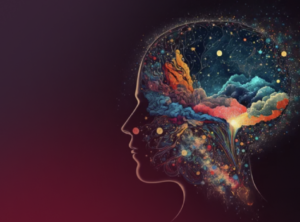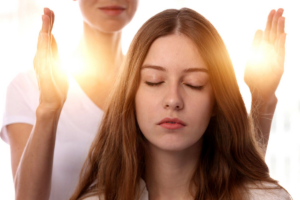
6 Instagram Tips for Better Yoga Pictures
September 5, 2024
Crossroads Kitchen: High-End Vegan Dining on Melrose
September 5, 2024
How Yoga Heals: Gabbi’s Story
Gabbi
When she came to see me December 16, 2014, her mom was with her. She was 17 and she reported feeling lethargic and dizzy. They told me about Gabbi’s challenges, which started when she was in 8th grade. Mom did most of the talking. Gabbi was quiet, reaffirming what Mom said, adding details here and there. They told me that Gabbi has Dysautonomia. They described it as a misfiring of autonomic nervous system. Many times, her resting heart rate was 120. Later, I looked on-line:
“Dysautonomia is an umbrella term for various conditions in which the autonomic nervous system (ANS) does not work correctly. Dysautonomia is a type of neuropathy affecting the nerves that carry information from the brain and spinal cord to the heart, bladder, intestines, sweat glands, pupils, and blood vessels. Dysautonomia may be experienced in a number of ways, depending on the organ system involved, for example difficulty adapting to changes in posture, or digestive symptoms.
Gabbi and her mother described it as a blanket term for POTS (Postural orthostatic tachycardia syndrome), Ehlers-Danlos syndrome (a condition that affects the cartilage, making one hyper-flexible), and other genetic components. She suffered from rheumatoid arthritis (an autoimmune component). Extreme vertigo/dizziness and fluorescent light sensitivities were pervasive symptoms that prevented her from going to school, especially in winter months when her symptoms got worse. She couldn’t look at a computer screen or read most days. She had to drop out of school half way through 8th grade, and would try to go back off and on with little success. The environment (the chairs, the lighting) were too stressful on her mind and body (Gabbi’s sensitivities are so severe that she can sense when a strong frequency like an internet signal is in a room and it affects her well-being). Another difficulty Gabbi had was lifting her left arm too high overhead, constricting blood flow to her carotid artery, causing her to pass out (I had to remember that for yoga).

Gabbi practicing Downward Facing Dog in the sunshine, May 2015. @ag.straus.
Medical History
Gabbi was hospitalized once in 2011 at the onset of her illness because they didn’t know what was happening to her. Her vertigo got increasingly worse and she had stabbing headaches. For four months (all of winter), she was bedridden. They gave her Vicodin at the hospital. Gabbi tried the traditional Western medical route to get answers and solutions for what was happening to her, but she and her family became increasingly frustrated when doctors repeatedly prescribed various medications that provided minimal, if any, relief. They received no definitive answers or long-term solutions. When one medication failed, another medication or a refill was suggested. The common medical practice for Dysautonomia is to take several medications – Gabbi refused. She took Ibuprofen on occasion if her pain was unbearable but she did not want to be medicated constantly. At time, the side effects of the medications were worse than the symptoms and none of the medications caused enough relief to justify continual use.
Gabbi’s family reached out to holistic doctors and researched information about diet and inflammation. A family member with issues similar to Gabbi’s taught them about the healing benefits of essential oils, which have provided a tremendous amount of relief for Gabbi (frankincense, especially). Dr. David Clark, a chiropractic neurologist, is the doctor that finally gave them practical and useful tools to use. They found him online and started videoconferencing with him. Gabbi was inflamed and malnourished, so Dr. Clark said, “We have to get your diet clean”. She started juicing, eating whole, natural foods, and she eliminated all sugar & processed foods. Eventually, Gabbi went to work with Dr. Clark and his brain rehabilitation program in North Carolina for one month.
Dr. Clark created simple exercises specific to the symptoms and issues Gabbi had. One example she told me about: he retrained her brain and heart by sitting her in an office chair and rolling it across the office in an attempt to surprise her. The surprise would elevate her heart rate and her taught her to deal and work through it in a safe setting (similar to desensitization behavioral techniques in psychotherapy, I imagine). He also had her Rollerblade to rebuild muscle mass. His methods worked tremendously for her and she finally started to have some relief.
She tried to reenter school in 10th grade. School nurses disregarded Dr. Clark’s methods & practices. In addition, they weren’t compassionate towards Gabbi’s symptoms (they didn’t understand her light sensitivities or why she couldn’t sit in a hard chair). They accused her of faking her symptoms for attention or to be able to go home. They were intrusive and would pry into her medical history. They continually suggested that she take arthritis medications. Overall, the traditional school atmosphere caused Gabbi’s health to decline, so they decided to leave that setting for good. Mom started a private school and enrolled Gabbi in it. Each day, she had the space and opportunity to heal holistically, while learning the topics she wanted to learn. She would also study subjects required for passing the GED (which she did!).

Teacher @rima_danielle and student @ag.straus. Gabbi’s healing journey with Dysautonomia is quite amazing!
Our Work Together
Gabbi was referred to me for weekly Reiki energy healing sessions. I also recommended gentle restorative yoga to help her body heal and to improve body awareness. Right before she came to see me, her arthritis inflamed and she threw out her back. She was curled into a ball in pain so she started researching yoga for sciatic nerve pain. She created a home practice that helped, so she was open to learning more yoga.
When I met her and her mom the first time, my head was spinning. It was hard to imagine being so young and suffering daily from chronic pain to the extent that you have to drop out of school and miss out on so much. I really wanted to help her live a healthy life. The problem was that I didn’t know much about what she was going through (I’m a therapist, not a doctor). Of course, I didn’t say that out loud and even though I hadn’t been through what she had, I could deeply empathize with her experience. I immediately jumped on my computer to start researching what she had once they left.
During Gabbi’s first session, she had no muscle mass (she wasn’t even able to walk the dogs) and her back was thrown out. We started with the basics. For the first few months, we did Reiki on some days, yoga on some days, and both on others. The yoga was yin, restorative, and educational. I taught her about breath work/connection, full body awareness, and meditation.
Two things I noticed right away about Gabbi:
- She wanted to learn how to heal herself.
- I only had to tell her something one time before she absorbed it immediately.

Gabbi in December 2015, living happy, healthy & free, healing herself from the inside out, one breath at a time. A true beautiful soul – follow her healing journey with dysautonomia @ag.straus (Instagram).
We started our work on December 16th, 2014. Winter is historically the worst time for Gabbi, so we slowly built strength – she reports that “yoga helped [her] build strength like no other exercise or workout ever has”. Her pain decreased in severity over time, and she learned to manage it throughout the day with short yoga sessions. Her time on the mat became the best time of her day, so she started spending more and more time there. Springtime came around and her health was improving dramatically. I started to challenge her more and more during our yoga sessions. I would check in with her every step, teaching her to listen to her inner voice and intuition to serve as her guide on how far to go. Eventually, she bought a nicer yoga mat, high-quality yoga blocks, and clothes specific for yoga (in other words, she became a true yogi!).
As 2015 moved along, Gabbi showed more and more improvement. We eventually needed a bigger space for her to practice each week as I began to challenge her more and more. We went from doing basic yin/restorative, to a slow hatha practice, to rotating in vinyasa flow. We’re working on Crow Pose (Bakasana), Wheel Pose (Urdhva Dhanurasana), and perfecting Chataranga Dandasana. Gabbi’s ability to maintain a slow, consistent Ujjayi breath control throughout her entire practice has been her strongest ally in her yoga practice and now in life. We start each session with a check-in, then we plan our time together based on what she needs that week. We create the curriculum together – it’s creative, collaborative, inspiring, and beautiful.

Gabbi December 2015, practicing Urdhva Dhanurasana, a year into her yoga journey. Follow her at @ag.straus (Instagram).
Changing The Story
Towards the end of summer, I noticed that Gabbi had a bit of anxiety. I asked if it was because winter is a not-so-fun time for her and if she was anticipating that her progress might decline. I was right, she said. I heard a familiar story from before: “Cold weather makes me sick”. I recognized being “dizzy” was a protection for her. If she perceived things might get difficult, “being dizzy” was a way to escape. I taught her about secondary gains we get from being sick and gave her tools to recognize those tendencies in herself, so she can face and deal with what she fears, versus using a shield. We named being dizzy “Mr. Dizzy” with a capital “D” and told him to hit the road. I told her that I didn’t want to hear about the cold or about dizziness anymore. Not that I didn’t care, but that I simply wasn’t interested in those parts of her story. Instead, I wanted to hear how she’s starting to find her strength, how some days might be okay and how some might be amazing, how she overcame the times she felt like staying in bed all day, how she got on the mat, and how that made her feel. I wanted her to change her story.
And so she did. I didn’t hear about her being dizzy anymore and as far as I can tell, if she is dizzy, she hasn’t let it limit her. If she’s not feeling well, she listens to her body and slows her practice down, but it’s not a big deal. Gabbi’s daily life has changed dramatically, and she’s finally able to enjoy her day-to-day life. She’s gained stamina and strength. She’s learned to relax her body and mind in any moment versus having to escape and lie down. She knows what environments are best for her well-being and she surrounds herself in those places/with those things (essential oils are a great tool and resource for Gabbi). She’s focusing on what she’s doing “right now”, and that helps her to ground down and take everything in, doing the best she can. Whether it’s taking the trash out or doing the dishes, she practices awareness and her yoga in the moment.



A few weeks ago, Gabbi went camping with her friends. Before that, she went to a big concert in Hollywood (to see “Micachu and the Shapes”). She practices yoga every single day and it brightens her day, relieves her pain, gives her something to work towards, and gives her tools to turn to that she takes off the mat. She’s learning about progressing slowly and being patient, learning to love herself all the while. She takes vitamins to support gene mutations: a daily Folate and a MTHFR mutation (you can Google the benefits of MTHFR, but Gabbi says it’s very important for sufferers of Dysautonomia and other autoimmune disorders). She eats healthy, she juices and drinks smoothies, she’s gluten-free (no grains) & she avoids dairy & sugar. She treats her illnesses completely holistically with essential oils, a daily yoga practice, proper, conscious eating, and by being conscious about her environment.
Gabbi wants to be a yoga teacher (she wants to focus on anatomy and safety) and she’s becoming an expert in holistic healing and essential oils. She wants to learn more about nutrition so she can help people manage chronic illness pain and autoimmune illnesses like Dysautonomia, and to give them options to heal themselves. I’m honored to bear witness to her story & I hope you will, too!
Follow Gabbi’s journey: @ag.straus

Follow Gabbi’s journey on Instagram: @ag.straus
Disclaimer
Before starting any new diet and exercise program please check with your doctor and clear any exercise and/or diet changes with them before beginning. I am not a doctor or registered dietitian. I do not claim to cure any cause, condition or disease. I do not provide medical aid or nutrition for the purpose of health or disease and claim to be a doctor or dietitian.
LATEST BLOG
Related posts
The hotel I could potentially help sell is the very first hotel I ever stayed at in Costa Rica, and where I first fell in love with Costa Rica. This is me at their pool when Pete and I visited in October 2013. Our family stayed there during our wedding. One of the owners made our wedding cake! Selling the hotel would be very symbolic!











